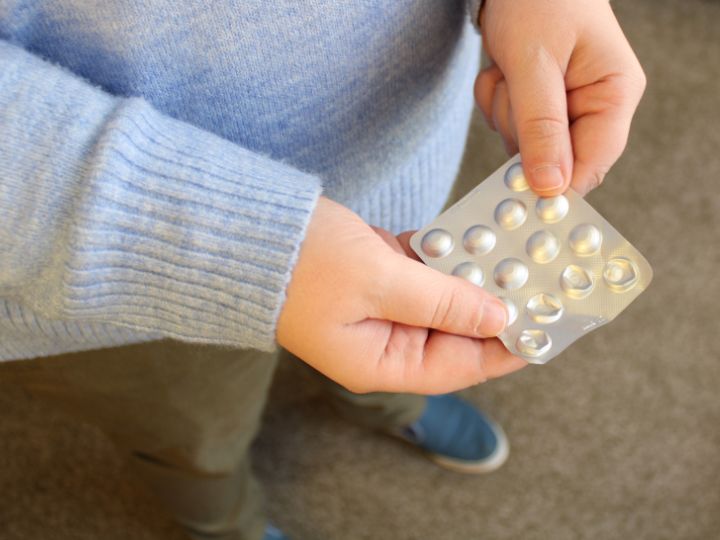Dextroamphetamine and Adderall (a combination of dextroamphetamine and amphetamine) are central nervous system stimulants commonly prescribed for ADHD and narcolepsy. While both aim to enhance focus and energy, their composition, potency, side effect profiles, and addiction potential differ in important ways. This post explores these medications in depth and offers insights into treatment and recovery for individuals coping with stimulant misuse.
What Is Dextroamphetamine?
Dextroamphetamine (commonly known by brand names like Dexedrine) is a potent stimulant composed solely of the dextro‑isomer of amphetamine, a particularly active form of the compound. It’s approved for ADHD in children (ages 3–16) and narcolepsy, with both immediate-release and extended-release formulations available
What Is Adderall?
Adderall is a medication that blends dextroamphetamine and levoamphetamine in approximately a 3:1 ratio. This mixture allows it to act more broadly. It affects both the central and peripheral nervous systems. It’s FDA-approved for treating ADHD and narcolepsy in adults and children as young as age 3 or 6, depending on the formulation
Key Differences: Composition, Onset & Duration
Though similar, Dextroamphetamine and Adderall differ in composition, how fast they work, how long they last, and who they’re approved for.
- Composition:
- Dextroamphetamine: Only the d‑isomer—stronger in potency.
- Adderall: Mix of d‑ and l‑isomers—provides a broader effect profile.
- Onset & Duration:
- FDA Approval:
- Dextroamphetamine: Approved for children 3–16.
- Adderall: Approved also for adult use.
Similarities Between the Two
Both medications:
- Increase dopamine and norepinephrine in the brain, aiding attention, impulse control, and alertness.
- Are Schedule II controlled substances with a high potential for misuse and dependence.
Effects on Body and Mind
Therapeutic Benefits (when used as prescribed):
- Improved focus, reduced impulsivity, and better daytime alertness for narcolepsy.
Potential Non‑Medical Effects (particularly with misuse):
- Elevated energy, euphoria, and enhanced performance or wakefulness, commonly misused in academic and professional environments.
Side Effects
- Common Side Effects (shared by both):
- Insomnia
- Appetite suppression
- Dry mouth
- Elevated heart rate
- Anxiety
- Headaches
- Palpitations
- Gastrointestinal upset (e.g. nausea or constipation), weight changes, irritability)
- Serious Side Effects:
- Increased blood pressure
- Cardiovascular stress (heart attack, stroke, sudden death in vulnerable individuals)
- Psychiatric symptoms (agitation, hallucinations, psychosis, mania)
- Seizures
- Depressive symptoms
- Growth suppression in children
- Skin or hair issues such as alopecia or rashes
- Risks of High or Long‑Term Dosage:
- A study found individuals taking high doses (e.g. 30 mg dextroamphetamine or 20–40 mg Adderall) had over a 5‑fold increase in the likelihood of developing psychosis.
Addiction and Dependence Risks
Both Dextroamphetamine and Adderall carry a high risk for misuse and addiction, particularly when used outside of medical guidelines. Recognizing the signs early is key to preventing long-term harm.
- High Misuse Potential: These stimulants can foster both physical and psychological dependence, especially when taken at higher-than-prescribed doses or without medical oversight.
- Signs of Addiction: Cravings, inability to reduce usage, doctor‑shopping, neglecting responsibilities, withdrawal symptoms, and risk-taking behavior.
- Withdrawal Symptoms: Common ones include fatigue and depression; they typically start within 24 hours of cessation, peak around 3 days, and may last up to 5 weeks or longer, with cravings persisting for months.
Treatment Approaches for Stimulant Misuse
- Medical Detox and Stabilization
- Supervised tapering and management of withdrawal symptoms.
- Behavioral Therapies
- Cognitive Behavioral Therapy (CBT) and other evidence-based approaches to address underlying triggers and thought patterns.
- Support Systems & Aftercare
- Peer support groups (e.g., 12-step programs) and community resources such as SAMHSA or the Suicide & Crisis Lifeline.
- Holistic & Lifestyle Strategies
- Establish routines, encourage physical activity, balanced nutrition, and behavioral coaching as adjuncts or alternatives to stimulant use.
When to Seek Help
If stimulant use begins to interfere with daily life—whether through increased dosage, declining health, emotional instability, or strained relationships—it may be time to seek support. Warning signs like obsessive thoughts about the medication, risky behaviors, or inability to stop use on your own shouldn’t be ignored.
In cases of severe symptoms such as hallucinations, chest pain, or suicidal thoughts, immediate medical attention is critical.
Premiere Addiction Recovery, a drug rehab in Florida, offers personalized treatment plans to help individuals safely recover and rebuild a balanced, healthy life. You don’t have to go through it alone, support is available.
Conclusion
Dextroamphetamine and Adderall can offer significant relief for ADHD and narcolepsy, but their potency, side effects, and high risk of misuse demand responsible, closely monitored use. When misuse occurs, effective recovery is possible through timely intervention, compassionate treatment, and continual support.
If you or a loved one is struggling with stimulant misuse, reach out to Premiere Addiction Recovery to explore your treatment options and begin the journey toward recovery.


